Yes, your analisys is correct and the tank does essentially store AC. With a theoretical ideal inductor and capacitor, the tank would continue producing the same AC voltage when the switch is opened and with no load connected. If a resistive load is connected, the AC voltage would decrease in amplitude exponentially, just like the DC voltage on a capacitor would when a resitive load is connected to it.
HOWEVER, back here in the real world, the inductor and capacitor required to store a meaningful amount of energy would be large and expensive. Also, real inductors in particular are far from ideal because of the resistance of the wire, and core losses (you can use air core, but then you need it to be even bigger).
Let's do a example to see how large and unrealistic the values get. Let's be generous and say we're only trying to power a 10 W load for a little while, so we want to store 100 J. Let's say the AC source is 120 V at 60 Hz, which is common line power here in North America. Twice per cycle, all the stored energy is either in the cap or in the inductor, so we can calculate the requirements of each independently. The energy in a capacitor is:
E = ½ C V²
where E is energy in Joules, C is capacitance in Farads, and V is EMF in volts. The 100 J will be stored in the capacitor at the peak of the voltage cycle, which is sqrt(2) times higher than the RMS, so 170 V. Solving for the capacitance:
C = 2 E / V² = 2(100 J)/(170 V)² = 6.92 mF
The resonant frequency of a L-C tank is:
F = 1 / 2π sqrt(LC)
where F is frequency in Hz and L is inductance in Henrys. Solving for the inductance:
L = 1 / (2πF)²C = 1 / (2π 60 Hz)²(6.92 mF) = 1.02 mH
The energy stored in a inductor is:
E = ½ I² L
where I is the current in Amps. Solving for the current:
I = sqrt(2 E / L) = sqrt(2(100 J)/(1.02 mH)) = 444 A
So, to store 100 J at 120 V and 60 Hz, the tank circuit requires a 7 mF 170 V capacitor and 1 mH 450 A inductor.
Real inductors have real equivalent series resistance. We want the tank to supply 10 W initially, so let's say we don't want the inductor dissipating more than 1 W of that on its own. The peak inductor current is 444 A, so the RMS current thru the inductor is 314 A. To dissipate only 1 W, the inductor's DC resistance needs to be only 10.2 µΩ. Yes, micro-Ohms.
To make things even tougher, the same current goes thru the capacitor, which also must have 10.2 µΩ ESR (effective series resistance) to only dissipate 1 W. Even with both components having this extremely low DC resistance, the tank will dissipate 2 W just sitting there on its own when it holds 100 J. The energy loss will be a exponential decay, in this case with a time constant of 50 seconds, or a half-life of about 35 seconds. In other words, this tank circuit is a very "leaky" energy store. If you charge it fully to 100 J, after 35 seconds only 50 J will be left, after a minute only 30 J, 9 J after 2 minutes, 2.7 J after 3 minutes, etc.
Even if you consider the above acceptable, look at what it would take to make a 1 mH inductor that can handle 450 A and have only 10 µΩ DC resistance. Now you can see why this idea, while theoretically correct, is totally impractical given current technology.
